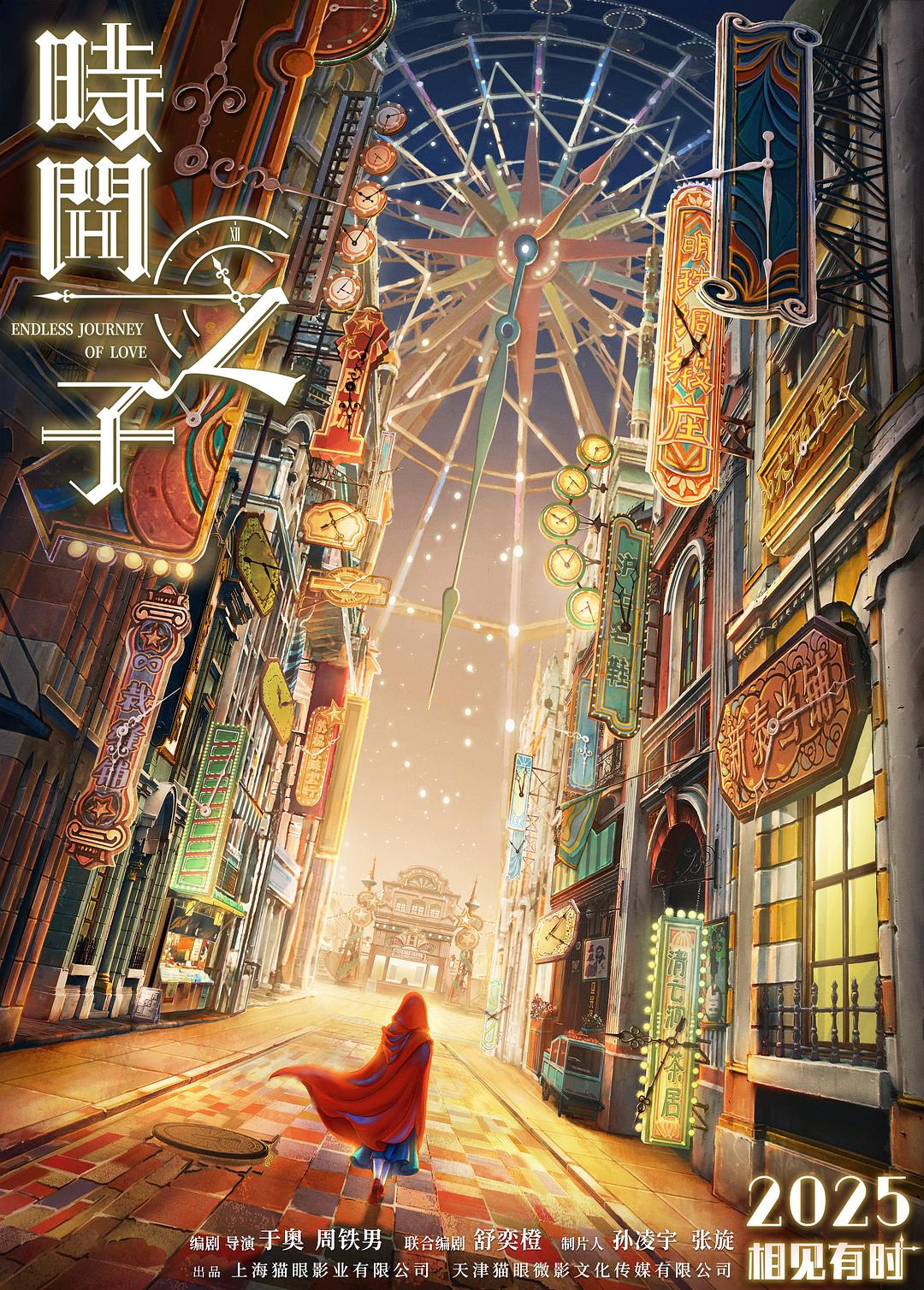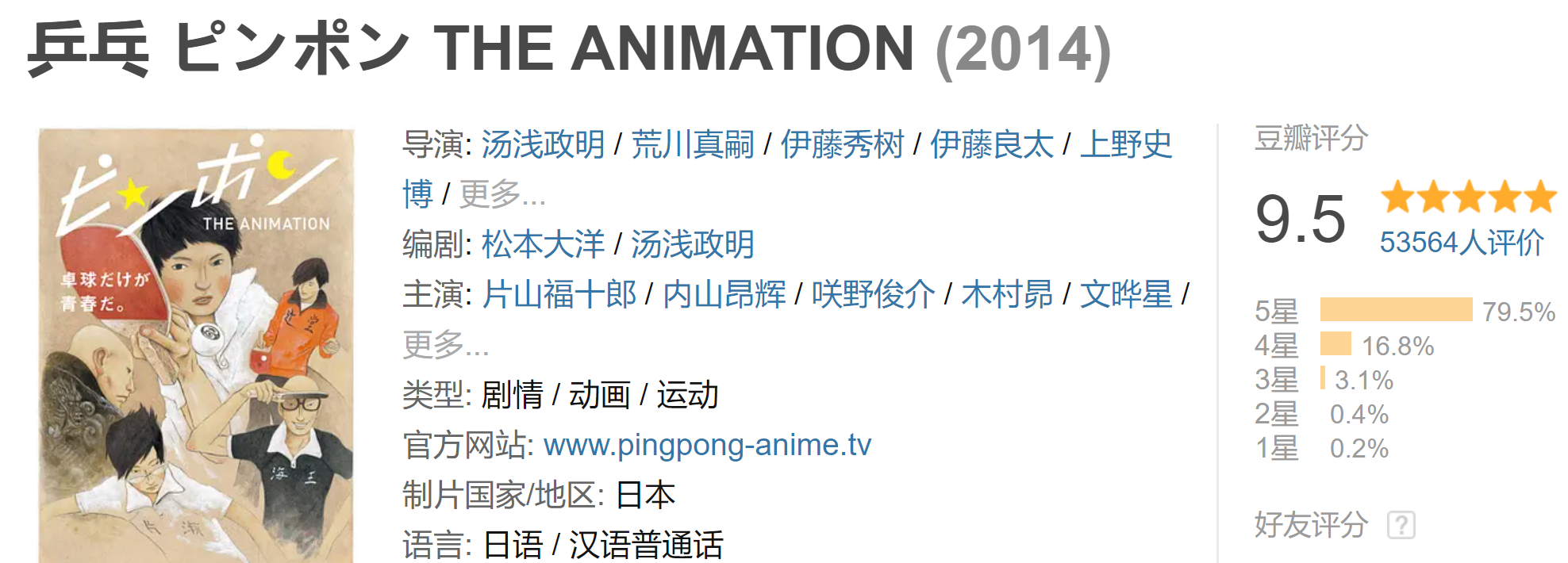
As the national sport, table tennis has always enjoyed immense popularity and a strong grassroots following in China. You can see table tennis enthusiasts of all ages honing their skills in neighborhoods and parks.
However, despite the years, there hasn’t been any outstanding table tennis animation produced domestically. In 2008, there was a film called "Ping Pong Hurricane," but it catered to a younger audience and had rather mediocre production quality — by today’s standards, it feels quite outdated. When people think of table tennis animation, the first title that comes to mind is still "Ping Pong," based on the work of Taiyō Matsumoto and directed by Masaaki Yuasa. Although it features Chinese players, it remains a Japanese work, which can create a sense of disconnect for domestic viewers.

In 2021, Huamei Animation released a trailer for the domestic table tennis animation "White Lightning" on Bilibili, catching the attention of many. The vibrant competition animation and the rich sense of realism were truly impressive. It's worth noting that an original sports animation that does not involve fantasy elements, romance, or 3D is as rare in China as a giant panda.
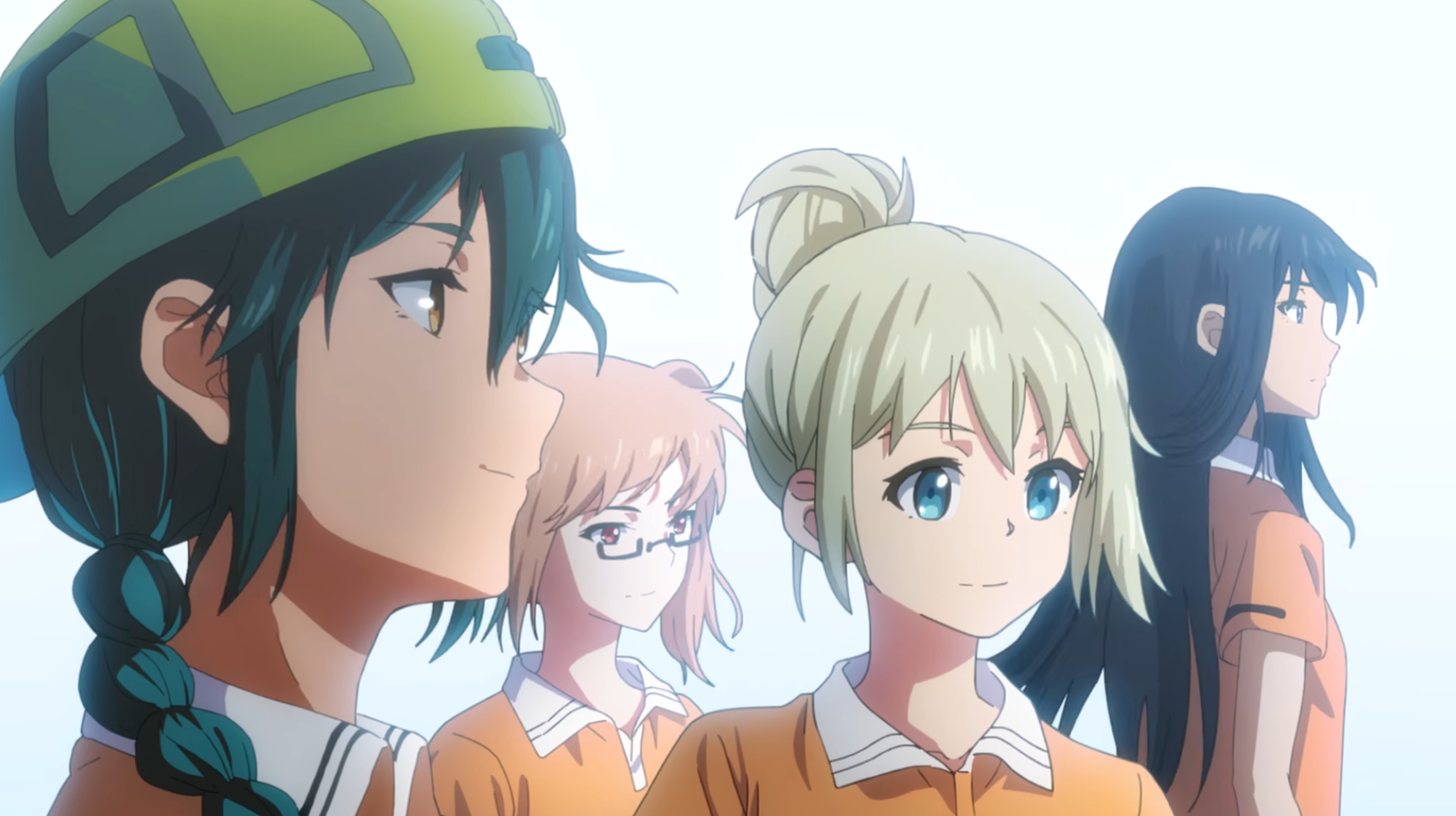
Stills from "White Lightning"
However, after the trailer's release, there was no further news, leading some to speculate that the production might have stalled. Finally, in June this year, the production team announced that it was set to air in July.
The first season consists of six episodes, which have just concluded. Although the character designs have undergone significant changes since the trailer three years ago, the high-quality standards from the preview have been maintained. Having followed the series from the first episode, I can confidently say that, barring any surprises, this will be the strongest domestic 2D animation of the year, representing the top tier of Chinese animation in the sports genre.

Poster of "White Lightning"
The plot of "White Lightning" is quite simple: Young girl Zhang Ruoyi dreams of joining the national team and becoming a professional table tennis player. However, a disappointing performance in the provincial selection competition shatters her dreams, leading her to abandon table tennis in favor of focusing on her studies. Later in high school, she leaves her hometown to attend Qiming Middle School in Hangzhou. There, she makes new friends, joins the school table tennis team, and rekindles her love for the sport.
It must be acknowledged that the storyline follows a well-trodden path, but the series excels in its vibrant characters and meticulous production quality, making even the most predictable plot developments engaging.
Let me introduce the main quartet of characters.
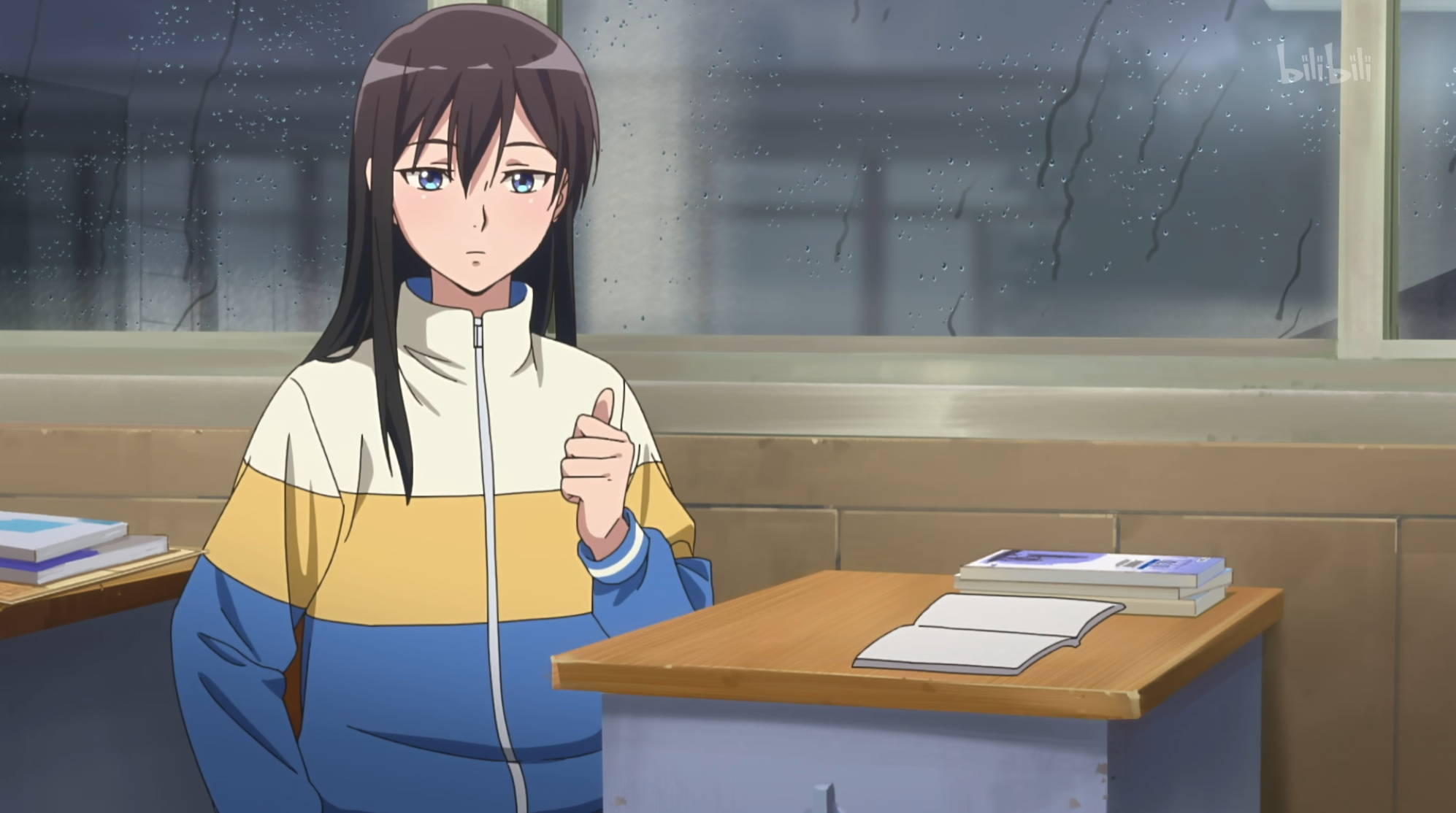
Zhang Ruoyi
Zhang Ruoyi: The female protagonist, whose sister is a key player on the national team. From a young age, Zhang has trained in table tennis under her sister, achieving her best result of being in the top eight at the provincial selection. She is also directionally challenged with a naturally oblivious demeanor, often unintentionally offending others.

Wang Lu
Wang Lu: The second female lead, a rival and friend of Zhang Ruoyi. Wang Lu is a model student who started playing table tennis out of interest and once clinched first place in the city's youth girls' singles. Highly competitive, she often claims to be too busy with her studies to join the team, yet secretly harbors a desire to improve her skills after losing to Zhang Ruoyi on the first day of school.
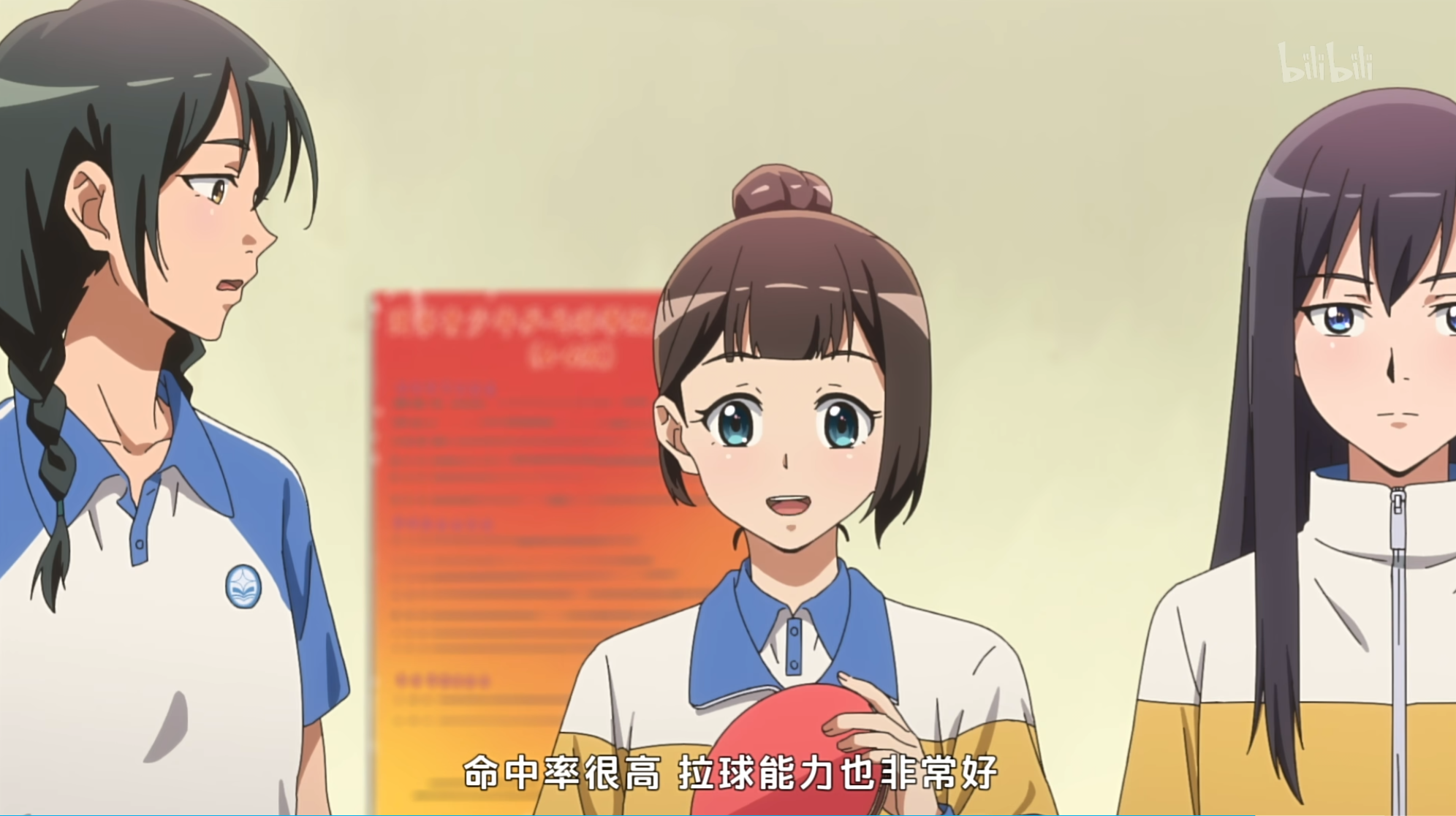
Li Xintong (center)
Li Xintong: Zhang Ruoyi's first friend at school. Although she’s not particularly skilled in table tennis, she possesses a wealth of knowledge about the sport, from rackets to glue to serving machines. She serves as the series’ commentator and endearing character.
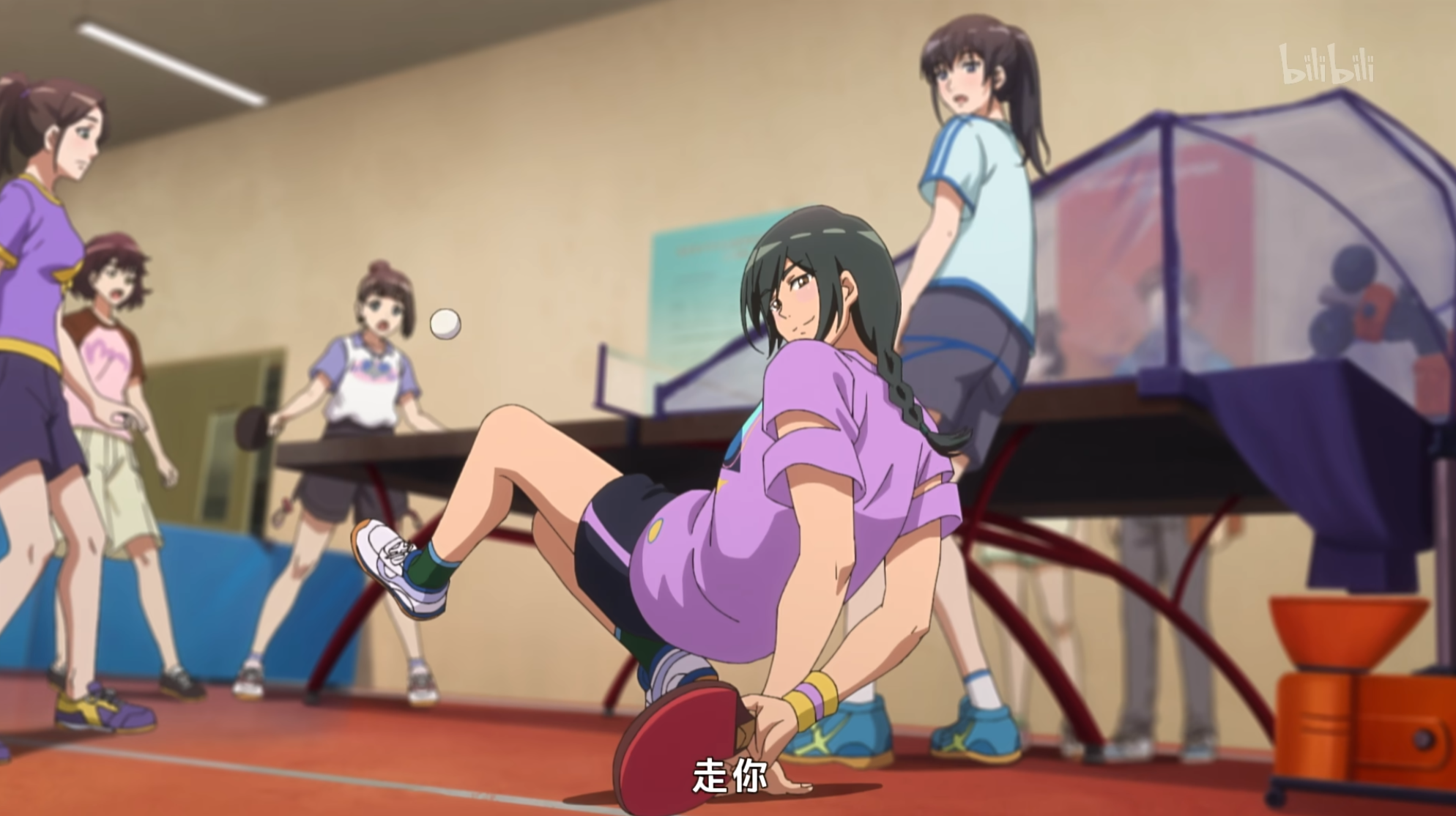
Ding Xiao (center)
Ding Xiao: The wildcard character typically found in sports narratives, she possesses exceptional physical talent, even outperforming Zhang Ruoyi in fitness tests. She's carefree and loves causing mischief, providing the comic relief in the series.
It's worth mentioning that the names of this quartet pay tribute to four national champions who achieved a Grand Slam (Olympics + World Championships + World Cup + National Games + National Championships + Tour Finals): Zhang Yining, Wang Nan, Li Xiaxia, and Ding Ning.
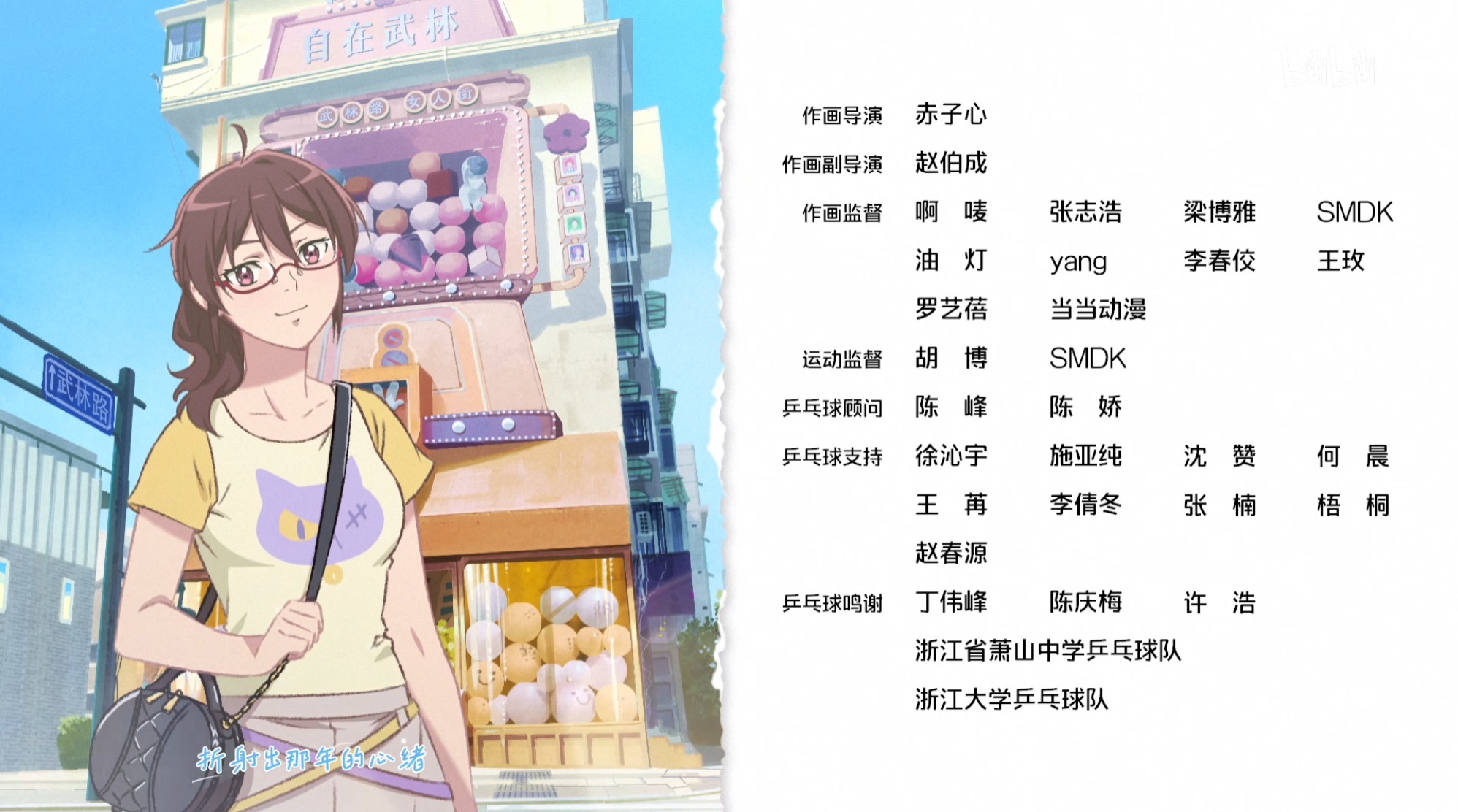
"White Lightning" engaged many professionals as consultants and for action demonstrations
As a table tennis animation, the depiction of the matches is understandably crucial. The production team put substantial effort into this aspect, enlisting various professionals as consultants for action demonstrations, and went out of their way to involve many animators for key matches, resulting in a visually stunning outcome.

Stills from "White Lightning"
The first episode opens with Zhang Ruoyi participating in the provincial selection competition during her middle school years. Forehand, backhand, chops, loops, and smashes — the show starts by elegantly showcasing the common techniques of table tennis, with smooth and detailed animation.
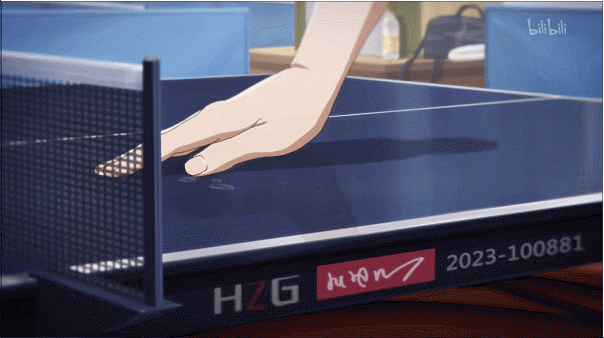
Stills from "White Lightning"
The addition of realistic details like wiping the table and exhaling (who hasn’t done that while playing table tennis?) along with the pleasant sound of the ball striking the table immediately endears the audience in just a few minutes.

Audience praise on the bullet comments for "White Lightning"
In the sixth episode, the series also features a doubles match. In 2D animation, the difficulty of action drawing is directly related to the number of characters on screen, and double matches featuring four characters present a significant challenge. However, the resulting visual appeal is remarkable, drawing viewers into the competitive atmosphere.

Stills from "White Lightning"
Beyond the meticulous depiction of table tennis techniques, the animation invests a considerable amount of time in showcasing table tennis tactics. In the doubles match of the sixth episode, Wang Lu, who partners with Zhang Ruoyi, is targeted by their opponents due to her weakness in backhand, leading to a score deficit. Their strategic response involves switching positions, allowing Zhang Ruoyi to handle the opponent's attacks against Wang Lu, enabling Wang Lu to gain a comfortable position to unleash her forehand power, ultimately turning the tide to win.

Stills from "White Lightning"
Besides the high-quality matches, "White Lightning" boasts several admirable production qualities (post-production, voice acting, art, etc.), but what struck me the most was its grounded essence deeply rooted in contemporary Chinese society, making it feel familiar and endearing, affirming that this is truly our animation.
The production team chose Hangzhou, where the company is located, as the backdrop for the story. Locations like Xiaohezhijie, Qinfeng Bridge Bus Station, Gongshu Sports Park, and the Grand Canal are almost all rendered based on real-life settings, with names directly lifted from reality. Although the Qiming Middle School in the series is fictional, quick research by netizens revealed it to be inspired by Xiaoshan Middle School, even replicating its school entrance exactly. After seeing so many animated settings that are either ancient or fictional, the depiction of a vibrant modern city in "White Lightning" is truly an eye-opener.

Stills from "White Lightning"
Surprisingly, the Hangzhou cultural tourism department even launched special promotional activities, allowing viewers to take a ride on the 132 bus featured in the animation to visit various locations depicted.

Hangzhou's cultural tourism department launched special promotional activities
As far as I can recall, this is the first time I’ve seen a domestic cultural tourism department organize a “sacred site pilgrimage” activity like this; they should have been doing this all along.
Frequent viewers of Japanese animation know that every year, several titles are set in real locations (for instance, this season’s "The Ordinary People"), with various tourism departments actively assisting in filming to attract visitors to spend and explore. Given China's wealth of unique cities, this model could also be adopted; I hope to see more local cityscapes reflected in upcoming animations.
Apart from the cityscapes, there are many small details in the show that resonate with viewers, making them recall their own school days, such as the captain always carrying around a thermos;

the familiar layout of the school cafeteria;
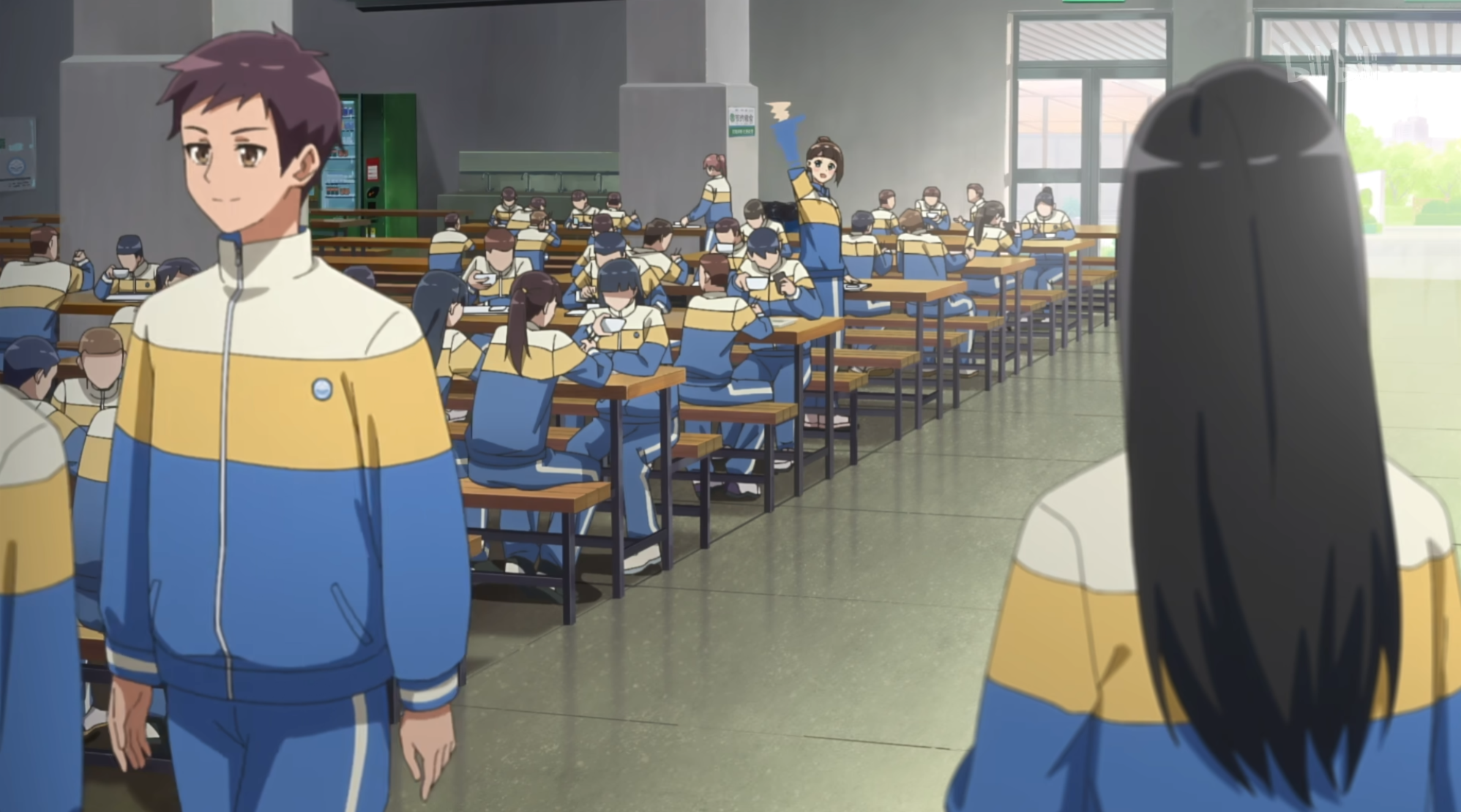
and Wang Lu's student-like wording in her team application;

In the current landscape of domestic animation, works brimming with such realism are incredibly rare.
The biggest drawback of this series is its short length. With just six episodes, viewers are left wanting more. Except for the sixth episode, which is over 20 minutes, the others are only 13 to 19 minutes long. Excluding the opening and closing credits, the entire first season adds up to less than 90 minutes, only covering the initial step of "gathering the team," with no formal matches featured, only memories or private practice sessions.
However, the production team clearly has long-term plans for this IP. In the fifth episode, the coach sets goals for a friendly match with the strong team, Linshi High School, and aims to win the city-level team championship. The sixth episode ends with the introduction of a bunch of powerful new characters, indicating that they could easily continue with three or four more seasons.

